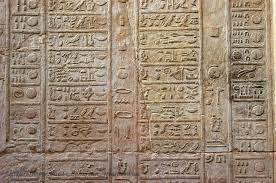The Egypt Calendar is a fascinating mosaic of events and traditions that span over 7,000 years, reflecting the rich cultural heritage of one of the world’s oldest civilizations. These events not only celebrate modern Egypt but also honor its ancient roots, blending time-honored customs with contemporary life. Many of these traditions began in ancient times, while others have gradually become integral to Egyptian culture and lifestyle.
Types of Calendars in Egypt
Egypt’s history reveals the use of multiple calendar systems, each serving different purposes and reflecting the evolving understanding of time in this land of wonders. In Egyptian destinations, five major calendar types have been used:
Egypt Solar Calendar: This ancient system was based on three primary seasons connected to the Nile’s behavior — the Flooding (Akhet), the Re-appearance (Peret), and the Low Water (Shemu). Although the Flooding of the Nile remains culturally significant, it is no longer observed as a public holiday.
Egypt Lunar Calendar: Predating the solar calendar, this lunar calendar was prominent in religious cults and temple observances, tracking the phases of the moon for sacred timings.
Civil Calendar / Lunisolar Calendar: Recognized as one of the most effective ancient calendars, it consisted of 365 days divided into 12 months of 30 days each, with an additional 5 epagomenal days. However, the lack of leap years meant it eventually fell out of use.
Ptolemaic Calendar: Introduced by Alexander the Great, this calendar incorporated Hellenized month names. It faced resistance from Egyptian priests and was ultimately discarded.
Roman Calendar: Egyptian scholars contributed to the establishment of the Roman calendar. After its reforms, it evolved into the Coptic calendar, which is still in use today, featuring three seasons — summer, winter, and flood.
Detailed Explanation of Solar and Lunar Calendars in Ancient and Modern Egypt
Ancient Egyptian Solar Calendar
The ancient Egyptians were among the first civilizations to develop a solar calendar based on their close observation of the natural world, particularly the Nile River’s cycles. Their solar calendar was divided into three main seasons, each lasting four months (totaling 12 months), reflecting the agricultural cycle:
1. Akhet (Flooding Season): This was the time when the Nile overflowed its banks, flooding the fields and depositing fertile silt. It lasted roughly from mid-July to mid-November. The flood was crucial for Egyptian agriculture.
2. Peret (Growing Season): Following the floodwaters’ recession, crops were planted and grew during this season. It lasted from mid-November to mid-March.
3. Shemu (Harvest Season): The period of harvesting crops, lasting from mid-March to mid-July.
Each season had four months of 30 days, making 360 days, with an additional 5 epagomenal days at the end of the year, dedicated to the birthdays of important gods (such as Osiris, Horus, Isis). This calendar did not include leap years, so over centuries, it slowly drifted against the solar year.
The ancient solar calendar laid the foundation for Egyptian timekeeping and agricultural planning. It also influenced later calendars such as the Coptic calendar used today.
Ancient Egyptian Lunar Calendar
Before fully relying on the solar calendar, Egyptians also used a lunar calendar which was based on the phases of the moon. The lunar calendar was mainly used for religious and ceremonial purposes:
It tracked the monthly lunar cycle of approximately 29.5 days.
This calendar influenced the timing of various festivals, rituals, and temple ceremonies.
The lunar calendar’s months began with the sighting of the new moon.
Because lunar years are shorter (about 354 days), this calendar required periodic adjustments to stay in sync with the seasons.
This lunar tradition remains significant in some Egyptian religious observances and influenced the Islamic calendar, which is purely lunar.
Egypt’s Holidays Today
Modern Egypt primarily follows the Western Gregorian calendar, yet the Islamic and Coptic calendars continue to hold major cultural and religious importance. The Islamic calendar is lunar, comprising 12 months of 29 or 30 days, making the Islamic year approximately 11 days shorter than the Gregorian year. Meanwhile, the Coptic (or Alexandrian) calendar is solar, made up of 12 months of 30 days plus a short month of 5 days, with an extra day added every four years.
Because of these differences, some Egyptian holidays are fixed to specific Gregorian dates, while others are movable, shifting according to lunar cycles. Below is a categorized list:
Fixed Holidays:
January 7 – Coptic Christmas
January 25 – National Police Day
April 25 – Sinai Liberation Day
May 1 – Labour Day
June 30 – Revolution Day 2013
July 23 – 1952 Revolution Day
October 6 – Armed Forces Day
October 13 – Suez Liberation Day
December 23 – Victory Day
Movable Holidays:
Coptic Easter
Sham El Nessim (Spring Festival)
Muharram (Islamic New Year)
Rabi’ al-Awwal (Birth month of Prophet Muhammad)
Eid al-Fitr (End of Ramadan)
Eid al-Adha (Four days of celebration)
Moulid El Nabi (Prophet Muhammad’s Birthday)
Some observances such as Good Friday, the Flooding of the Nile, and Easter Saturday are culturally acknowledged but are not official public holidays.
Despite the official status of these holidays, all of the above are celebrated with great enthusiasm, offering visitors a vibrant glimpse into Egypt’s living traditions.
Why These Calendars Matter for Visitors
Understanding Egypt’s diverse calendar systems enriches your travel experience by allowing you to:
Witness unique religious and cultural festivals.
Plan visits around national and religious holidays to avoid closures or crowds.
Gain deeper insight into Egypt’s ancient and modern cultural heritage.
At LuxuryNileTours.com, we help you experience these rich traditions as part of your unforgettable Egyptian journey

